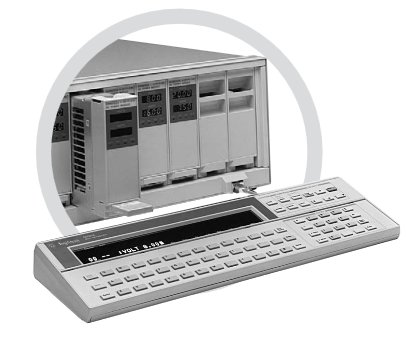Agilent 66102A Product Review
The Agilent Technologies “one-box” design philosophy packs increasingly expanded capability into their power products. The Agilent 66102A DC power supply is an excellent example of this. Because of its quality design, clients benefit from lower instrument requirements, excellent use of rack space and simplicity of test setups. This ultimately results in lowered purchase costs.
The Agilent 66000 series power systems are very popular by offering high flexibility and speeds within small rack space. Modules that allow mixing and matching address the needs of many applications. This MPS series enables simple test-system assembly, programming, and operation. It is well suited for automated test equipment and production test environments. Rack-space savings result from the 7-inch-high (4-EIA units) mainframe that accommodates up to eight DC power modules.
Programmable Features
The MPS series features current and voltage protection. Initiation of self test occurs at power up or from GPIB command. Electronic calibration is achieved over GPIB or from keyboard. There is protection for over-temperatures and indicators for discrete fault or remote inhibition.
The 66102A DC power supply is known for high performance, enabling quick and accurate electronic testing. With simplified system cabling and assembly, the modular design will allow for up to 8 outputs of 150 W each output in 4U of rack space. At 150 W, modules are available at 8 V to 200 V, 0.75 A to 16 A.
Ease of Use
Technician features include being easily swappable, thus permitting simple reconfiguration or repair. They produce quick, low-noise outputs. Tasks can be streamlined with built-in measurements and advanced programmable features. Computer control is achieved through GPIB. They employ the LIST mode, advance triggering system, and optional keyboard for manual control.
Learn about reducing test time with RF List Mode
Agilent 66lxxA series power modules are also utilized in the Agilent 66000 MPS mainframe to give a range of DC output voltages and currents. The modules are placed or removed from the mainframe front without having to disconnect any wires. They may be installed in series or parallel to enable hiked voltage or current outputs. They can allow optional isolation with the module output connector having built-in polarity reversal relays. The module front panel allows digital readouts of output voltage and current.
Protection Circuitry
Other notable functionality includes annunciators that show constant voltage, constant current, or unregulated operation, and activate a protection circuit and disable output. Additional indication includes remote operation (via the controller) with the module output connector having built-in polarity reversal relays.
In terms of programming, the Agilent 66102A shines. The power module is computer-controlled via the GPIB using SCPI (Standard Commands for Programmable Instruments). This enables the compatibility of power module programs with those of the rest of the instruments controlled in the language.
Learn how to program using SCPI
The 66102A DC power supply is known for high performance, enabling quick and accurate electronic testing. With simplified system cabling and assembly, the modular design will allow for up to 8 outputs of 150 W each output in 4U of rack space. At 150 W, modules are available at 8 V to 200 V, 0.75 A to 16 A.

The power module can also be programmed locally using a keyboard option. The keyboard has an alphabetical command menu that addresses all the SCPI commands of the module. When the menu is scrolled through and the appropriate parameters are inputted, commands for development or debugging may result.
Overall, the advanced feature set combined with the reliability Agilent is famous for make the 66102A model worthy of consideration.
Click here to view the Agilent 66102A
John Bahng
Latest posts by John Bahng (see all)
- Agilent Network Analyzers On Sale - June 5, 2014
- Agilent 16902B Logic Analyzer Product Review - April 22, 2014
- Agilent N8973A Noise Figure Analyzer Review - April 11, 2014










